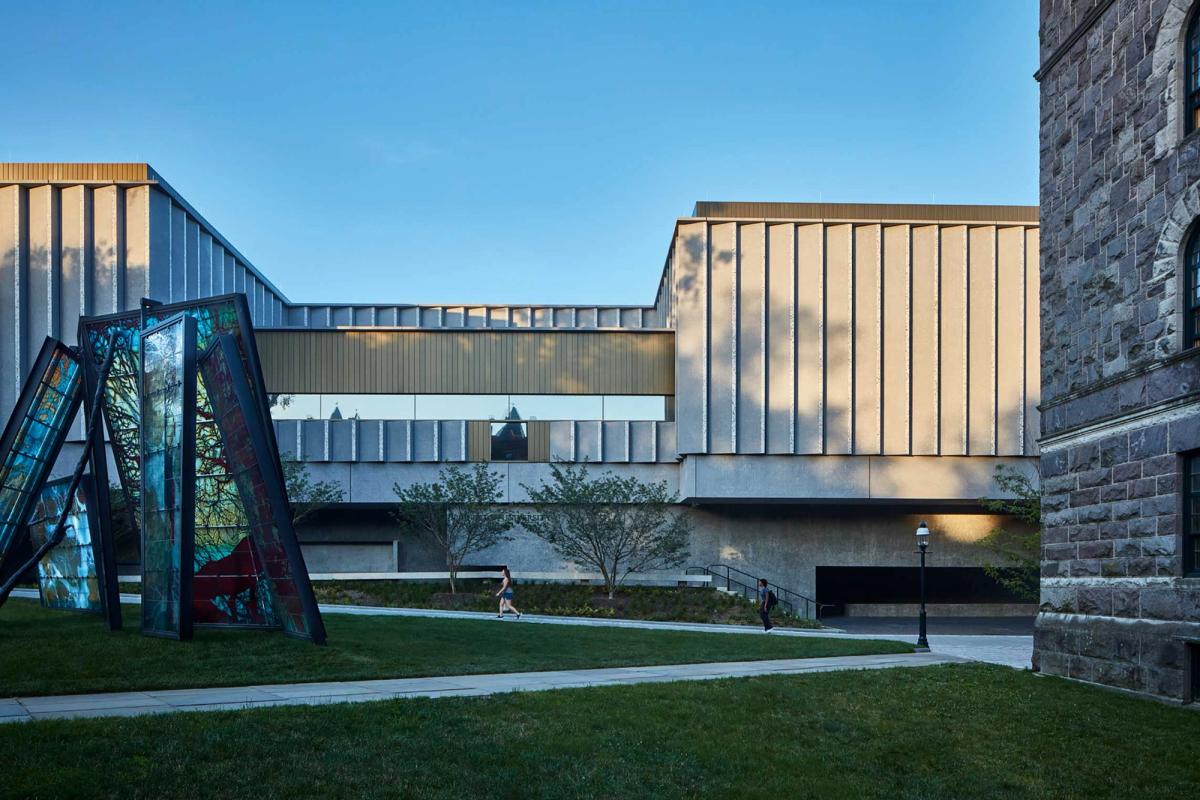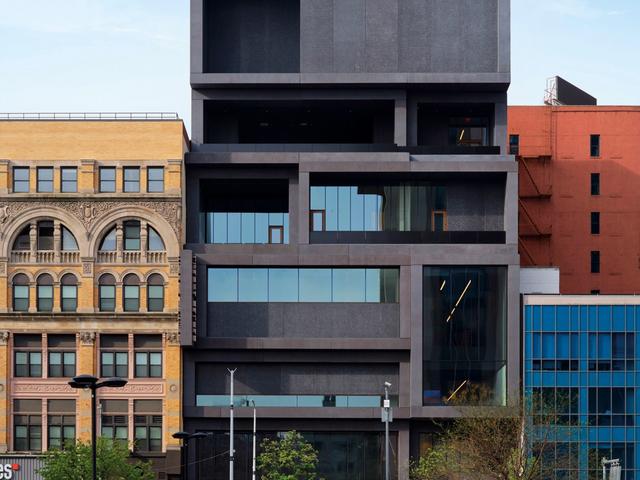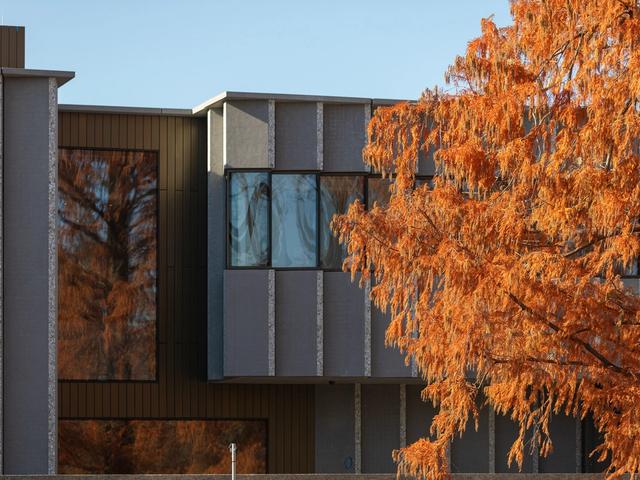The Princeton University Art Museum (PUAM) in New Jersey is opening a new, 146,000-sq.-ft facility at the heart of the college campus on 31 October, doubling the size of its former exhibition and art-education spaces. The original building was constructed in the 1880s and saw multiple additions and renovations over the years before being demolished in 2021. The vision for a comprehensive new museum began years ago, following the completion of the previous museum’s last wing in 1980.
According to James Steward, the director of PUAM, the previous building only had the capacity to display around 2% of Princeton’s 117,000-object collection, and access to the remaining art for students, scholars and the general public was dismal. The old building also had an “upstairs-downstairs problem”, he tells The Art Newspaper, wherein Western art was “privileged, and everything else was spatially secondary”.
“It was apparent the cobbled-together building was inadequate and didn’t account for the diversity of collections we care for, nor for the realities of Modern and contemporary art, especially works in new media or large-scale installations that weren’t imaginable in earlier decades,” Steward says. “As a museum that aspires to be globe-spanning—if not encyclopaedic—one key design issue was how the collections could be in better dialogue with each other, rather than isolated in silos. The old building made that nearly impossible. There was very little opportunity for the collections to speak to each other, or to the public.”
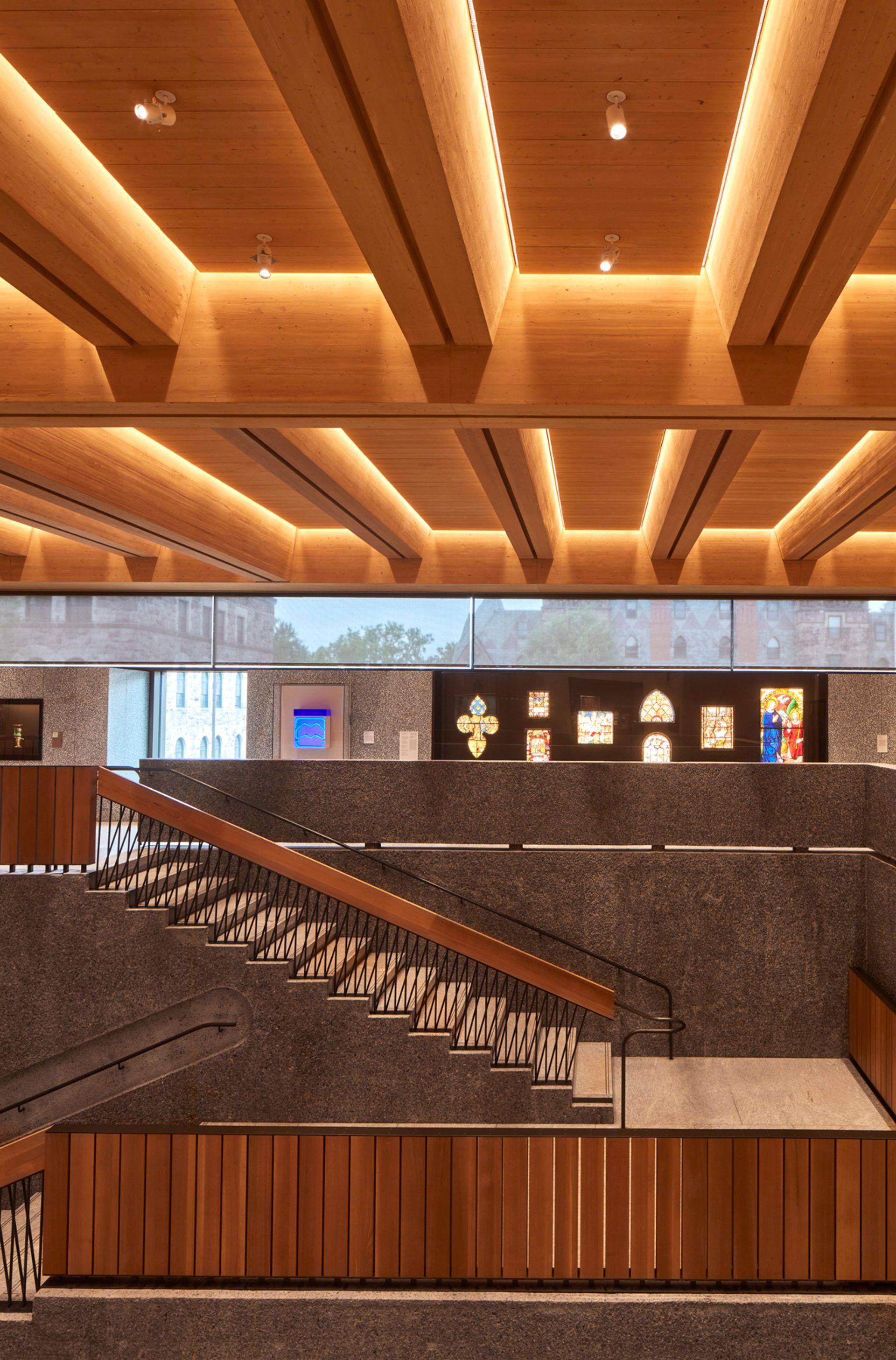
Inside the new Princeton University Art Museum Photo: Richard Barnes, courtesy the Princeton University Art Museum
The new museum building spans three floors, with nine interlocking pavilions and multiple entrances woven into the landscape of the university campus. Its architecture, emphasising openness and permeability, is composed of steel frames with concrete walls and a façade clad in stone panels with polished and textured finishes and bronze accents. The new PUAM features around 80,000 sq. ft of exhibition space, in addition to classrooms, seminar rooms and a grand hall.
The project was announced in 2018 and designed by Adjaye Associates in collaboration with the executive architect Cooper Robertson—the two teams also worked together on the Studio Museum in Harlem, which opens in mid-November. Several museums severed ties with the architect David Adjaye following sexual-assault allegations against him (which he denies). However, PUAM continued with its project, stating that its building was already more than 50% complete when the allegations surfaced in 2023 and that other parties took over managing the on-site construction later in the process.
Curators rethink themes
Inside the new museum space, curators sought to move away from rigid categories like geography and chronology. According to Juliana Ochs Dweck, PUAM’s chief curator, “place and media remain useful tools”, but they sought to rethink the “seamless, homogeneous narrative” of the previous building, which had “structural hierarchies that reinforced outdated values”. She further notes that the collection’s installation aims to “explore themes like the human form, materiality, texture, colour, finish and landscape, modelling the kinds of interdisciplinary work we will be doing in the classroom”.
While some galleries will still be thematic, each includes cross-cultural and cross-media pairings. For example, works by Winslow Homer are shown with those of artists like Jaune Quick-to-See Smith, and Andy Warhol’s Blue Marilyn (1962) is placed in conversation with an Italian 14th-century Virgin and Child.
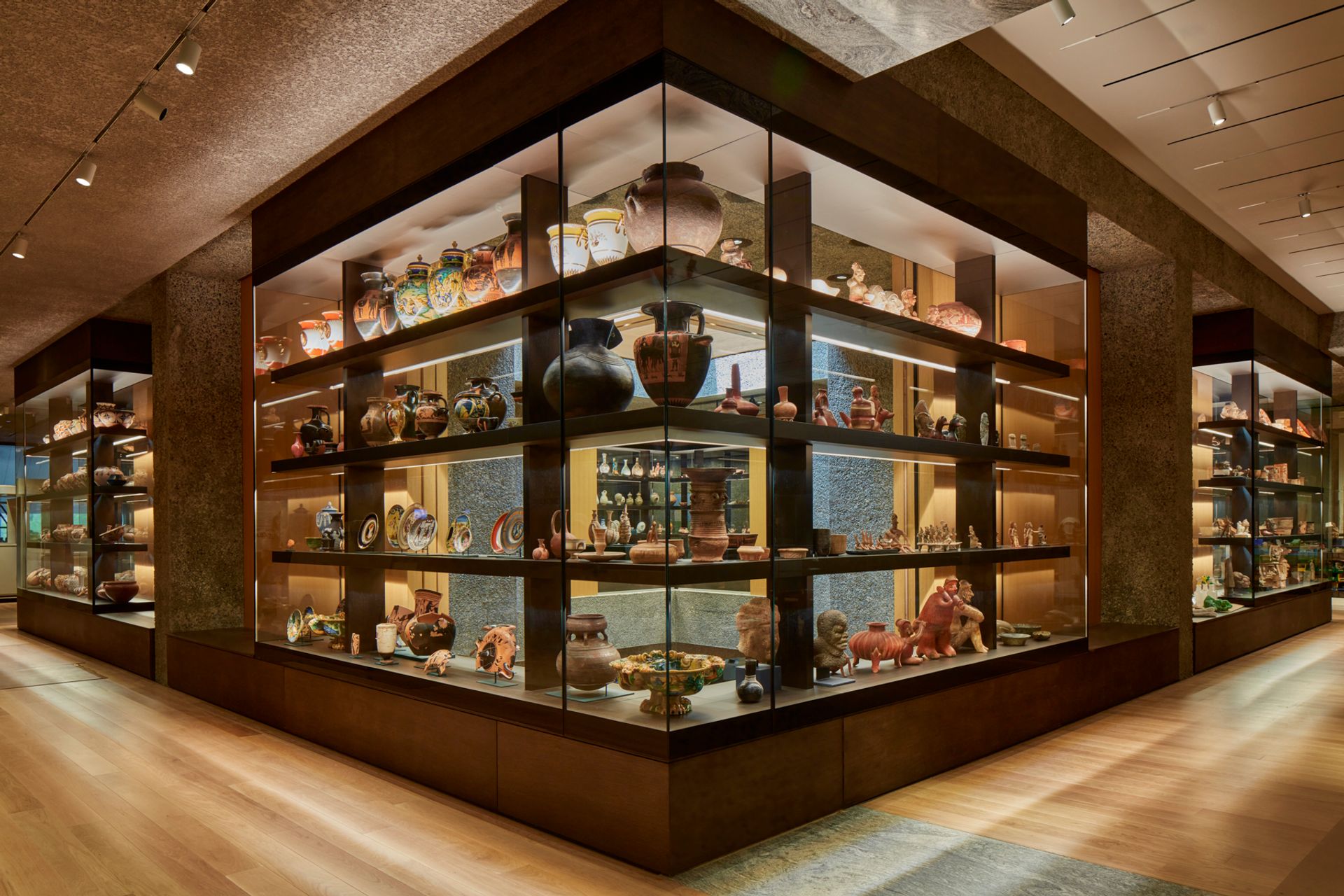
Inside the new Princeton University Art Museum Photo: Richard Barnes, courtesy the Princeton University Art Museum
Several works of art were commissioned or acquired to be integrated into the architecture, with some drawing inspiration from the museum’s collection. Diana Al-Hadid’s The Ziggurat Splits the Sky (2024-25), a ghostly sculpture on the east terrace made from aluminium and hand-painted bronze strips, references the ziggurat form, ancient stone monuments and Princeton’s excavation history. Jane Irish’s ceiling painting Cosmos Beyond Atrocity (2024) is a Renaissance-style, fresco-like work depicting scenes of violence that incorporates elements from the collection, including ancient oil lamps from Antioch. And Tuan Andrew Nguyen has created Naga (2024), a 20ft-high kinetic mobile similar in spirit to the work of Alexander Calder. It comprises polished discs made from unexploded Vietnam War-era ordnances, and it hangs above an ancient Medusa-head mosaic, reflecting themes of reincarnation and renewal.
In addition, Nick Cave’s 40ft-tall mosaic Let me kindly introduce myself. They call me MC Prince Brighton. (2024) is installed in a covered outdoor space and welcomes visitors to the museum. It depicts a figure accompanied by golden Adinkra symbols—each carrying meanings like peace, truth or courage—and a wooden armature made from trees felled on site. Acquisitions include Jun
Kaneko’s ovoid glazed-ceramic sculpture Untitled (Dango 13-11-27) (2013), located outdoors on the museum’s north side and acting as a landmark for the building. And visible both from inside and outside, Rose B. Simpson’s Heights I (2022) on the south terrace centres contemporary Indigenous and diasporic voices.
Thousands of new works donated
The museum opens with the exhibition Princeton Collects (31 October-29 March 2026), which spans two galleries and around 150 works chosen from a collection of 2,000 total pieces donated to PUAM since 2021 for the new space. These gifts have strengthened the collection across all areas, with the show featuring landmark works by Gerhard Richter, Helen Frankenthaler, Zanele Muholi and others.

Southwest façade of the new Princeton University Art Museum Photo: Richard Barnes, courtesy the Princeton University Art Museum
Another inaugural exhibition is Toshiko Takaezu: Dialogues in Clay (31 October-5 July 2026). Before her death in 2011, the late Japanese ceramicist—who taught at the university from 1967 to 1992—bequeathed to the museum around 40 of her signature “closed forms”, non-functional enclosed vessels. PUAM’s show places Takaezu’s ceramics in dialogue with works by artists like Kitaōji Rosanjin, who deeply influenced Takaezu, and Robert Motherwell, whose ink drawings Takaezu studied.
An exhibition highlight opening in March 2026 will be Willem de Kooning: The Breakthrough Years, 1945-50. Inspired and organised around a cornerstone of the museum’s collection, the painting Black Friday (1948), the show partly re-creates de Kooning’s debut exhibition at New York’s Charles Egan Gallery in 1948. Another exhibition, including rarely seen works by Jean-Michel Basquiat, is scheduled for later in the year.
PUAM is planning a grand opening of its new space with a 24-hour open house starting at 5pm on Friday and featuring a Halloween-costume contest, film screenings, yoga classes, poetry readings and other events. In the future, the museum plans to host lectures, panel discussions, concerts and other public programming, in addition to regularly rotating its collection galleries.
“We have one of the most sprawling collections of any university campus and have intentionally tried to understand the benefits of that and what it means to put different cultural traditions in conversation with the 21st century,” Steward says. “The galleries are profoundly impactful. They encourage people to see familiar artists in new ways and invite visitors to actively participate in making meaning.”
- Princeton University Art Museum opens with a 24-hour open house, 31 October-1 November


